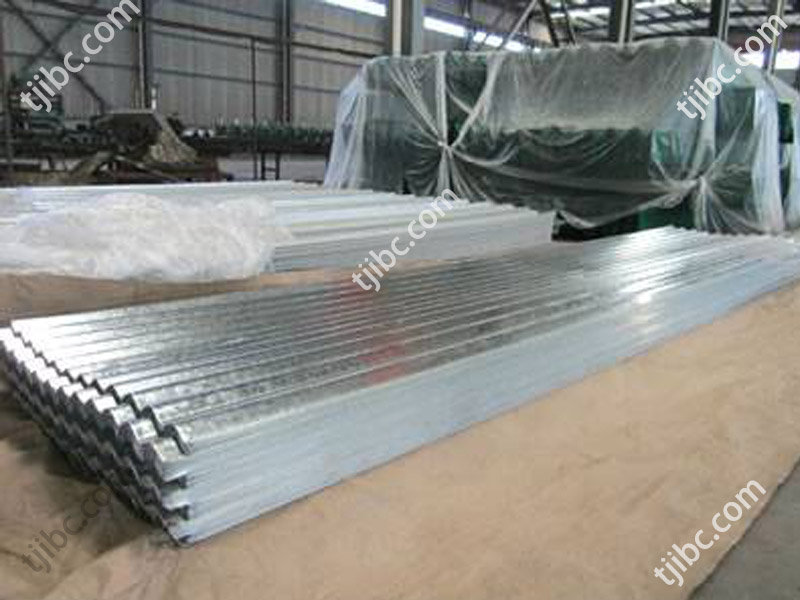
Corrugated Roofing
If you’re thinking about having a corrugated roof on your home or business, you have plenty of company. Corrugated metal has a distinctive appearance and is relatively easy to put in. IBC can supply the sheeting you need. Our instructions will take you through from measuring and cutting the panels to attaching them securely. With our help, you can get a professional-looking finish without spending lots of money on installation costs.
How to Install Corrugated Roofing Sheet?
Installing corrugated roofing is not as difficult as it may seem at first glance. In fact, with a little help from some friends or family, the project can be completed in a couple of hours. Here is a step-by-step guide on how to install corrugated roofing:
What You’ll Need When Install Corrugated Roofing Sheet
You’ll need corrugated panels and the relevant tools: Screws, washers, a Tape Measure, Circular Saw, Hand Saw and drill, straight edge. To start off, it is important to remember to wear safety glasses whilst cutting the panels to size using a saw. Pre-drilling holes in the panels with your drill will make attaching them to the structure much easier. Start at one end and attach each panel with screws and washers as you work your way down. After they are all in place, use a Straight Edge tool to check for any leaks or gaps – these should be sealed with caulk or weatherstripping if necessary.
Necessary Fixings and Flashings for Your System
1. Decided What Necessary Overlap and Overhang
The wave-like design of corrugated sheeting allows for easy overlapping. Your manufacturer’s guide should give the recommended length of this overlap, based on your roof’s pitch – usually 150mm for 10° pitches, and 300mm for 5° pitches. To help prevent water from coming into contact with rafters or purlins which can cause damp and structural damage, ensure you have an overhang of at least 60-70mm.
2. Cut the sheets to size
Measure the length of your rafters and the distance between them. This should give you an area size for the sheets to be cut to. Depending on the material of your sheet you may need to use either a circular saw or hand saw. Either way, the sheet should be secured to a workbench so that you can get an even cut.
3. Choose the Overlap Direction
We overlapping the sheets in the direction of the wind. For example, if the wind is blowing from the east often if your area, the sheets on the left should overlap those on the right. This will prevent wind from blowing your sheets apart during the installation. This also very important in the following days.
4. Fix the First Sheet
Align your first sheet at the edge of your roof, ensuring that the necessary overhang is maintained. Then, fix your screws or nails through the corrugation and into the purlin. These should be run vertically and not overtightened. And then fix the remaining sheets. The rest of the sheets can then be fixed. Remember to overlap each sheet with the one before it and secure using vertical fixings.
6. Add Flashing
Some flashing pieces will be similarly be corrugated and as such can also be overlapped with your sheeting. Flashing should be installed at the ridge, eaves and at any point where your roof abuts a wall.
Extra Tips When Installing Corrugated Roofing
You should know a few things before installing corrugated roofing on your home or business. Here are some tips to help you install corrugated roofing. Ensure you acquire the necessary equipment for the task. You will require a hammer, screwdriver, drill, saw and screws. Gauge the location in which you will be attaching the roofing. Doing so will help you calculate how much material is needed to complete it. Using a saw, cut the panels to size. Make sure to use protective eyewear when doing this. Utilize a drill bit that is marginally smaller than the screws when drilling holes in each panel, as this will prevent them from fracturing. Finally, install the panels by fastening them with screws, beginning at one end and continuing all along its length.
When making your sheet purchase, opt for the same brand of flashing and fixings to ensure all parts of your roof system are suitable. When keeping unprotected sheets outside, ensure they’re shielded from direct sunlight which can lead to cracking or deformation. Additionally, avoid using them on windy days as gusts can send them flying, inflicting harm. In cold weather, cut PVC cautiously as it may cause severe damage. Prior to cutting, store these sheets in a warm place for two to four hours.
Conclusion
You’ve taken the first step in installing your own corrugated roofing! This project will save you money over time and give you a sense of accomplishment knowing that you did it yourself. Follow the instructions carefully so that your finished product looks great and lasts for years to come. With a little patience and elbow grease, you’ll be an expert in no time.
Now that you’re ready to go ahead with your project, the only thing left to do is order your sheets and get to work. Take a look at our corrugated roofing range. Thanks to IBC savings and our nationwide delivery network, your project will be kept on-budget and your materials could be with you in a matter of days. Plus, thanks to our price-match promise, we won’t be beaten on any like-for-like quote.
If you’ve still got any questions, get in touch with our award-winning customer service team. They’ll be able to help you get your project underway as soon as possible.

Get In Touch With Us
